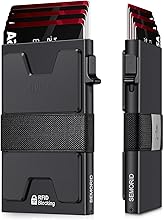
New comet makes historically close approach to Earth today, but spotting it will take some luck
CBC
There's a newly discovered comet in the sky, and it's about to make its closest flyby of Earth.
Comet Nishimura (C/2023 P1) will zip past the planet at a distance of roughly 125 million kilometres today.
The comet was discovered on Aug. 12 by amateur astronomer and comet-hunter Hideo Nishimura, using his telescope in Kakegawa City, Japan, roughly 180 kilometres southwest of Tokyo.
Unlike some other recent comets, Comet Nishimura has only been visible in the pre-dawn sky rather than later at night, which has made it an early-morning catch. It is now transitioning to early-evening visibility, though it will be tricky to see as it will lie low on the horizon just after sunset.
Some early risers have managed to capture Comet Nishimura before sunrise as it has made its approach over the past few days, most of them with telescopes.
And there have also been some impressive images from astrophotographers using large telescopes.
Over the next couple of days, Comet Nishimura can be seen in the early morning, low on the eastern horizon, or just after sunset, low in the western sky. Starting on Thursday, it will only be visible in the evening near the western horizon.
The comet's brightness is rated around 4.0 on the magnitude scale used by astronomers, which means it is visible to the unaided eye, even in urban settings. By comparison, the full moon has a brightness magnitude of -12.6 on the scale, in which the brightest bodies in the sky have the lowest ratings, and stars that are visible only with binoculars have a magnitude of 9.5.
However, because its orbit takes it so close to the sun (as seen from Earth), the comet is difficult to spot.
"While it gets closest to Earth [today], it will be very hard to see even if [it is] fairly bright, as it will be low to the horizon from Canada just after sunset or just before sunrise," said Peter Brown, professor and Canada Research Chair at Western University's department of physics and astronomy.
"It will not be as spectacular as Comet NEOWISE [was] in 2020, and will likely be hard for the general public to see as anything except a very faint smudge."
But if you're up for a challenge, you can visit TheSkyLive.com and enter your location to see when the comet rises and sets in your area.
At the moment, Comet Nishimura is in the constellation Leo, but it will move into Virgo on Saturday. Then, on Sunday, the comet will make its closest approach to the sun: roughly 34 million kilometres away, inside the orbit of the closest planet to the sun, Mercury.
What happens then is anyone's guess: either it lives to see another orbit — roughly 400 years from now — or it could break apart.





















 Run 3 Space | Play Space Running Game
Run 3 Space | Play Space Running Game Traffic Jam 3D | Online Racing Game
Traffic Jam 3D | Online Racing Game Duck Hunt | Play Old Classic Game
Duck Hunt | Play Old Classic Game